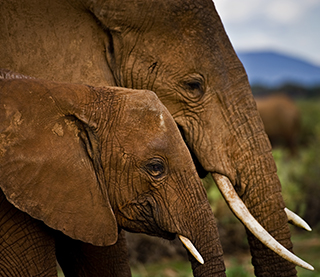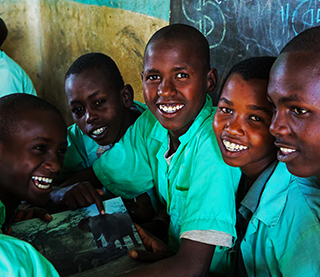Every three years the world’s governments, NGOs and intergovernmental organizations come together for the Convention on International Trade in Endangered Species (CITES). It is the single most powerful forum for deciding the future of elephants.
Over the last several years, the Samburu elephant population has become one of the best studied in the world. The 1200 or so elephants that use the reserves are recognized individually by the shape of their ears and tusks. Births, deaths and interactions are closely monitored, making this population a Rosetta Stone for interpreting impacts of poaching on the society. In 2009, STE was the first organization to warn, with hard data, of the storm of illegal killing descending on East Africa’s protected areas. This data was used to help push out Tanzania’s proposal to sell its ivory in 2010 in Doha.
Armed with a decade of MIKE data showing clearly that a fifth of the families studied no longer have a matriarch to lead them in a previously “safe” population, STE went to the CITES in Bangkok in 2013. Significant progress was made, and after our intervention which read in part: “We urge all parties to unite in supporting ivory demand reduction and to initiate public awareness campaigns to reduce demand, to stop the killing,” all parties subsequently endorsed such campaigns, getting the world one step closer to taking the united action necessary to reduce demand for ivory. There were wins on many fronts. A new mandate stated that DNA samples should be taken on future ivory seizures that are larger than 500kg, and there will be a requirement for all parties to CITES to report on ivory stockpiles once a year. Tanzania’s wise withdrawal of their proposal to sell their ivory stockpile led to a much friendlier atmosphere between delegates from the African elephant range states who have differing philosophies and who have clashed in the past over the question of sales of stockpiled ivory. Even the discussion of whether or not there ever could be an ivory trade was postponed and the ban remains in place as before.
In 2019, we were in Geneva in force for CITES and, again elephants took centre stage at the two week conference alongside 500 other species being debated for protection. The status quo on ivory was maintained, with proposals from pro-trade nations were defeated as were plans to put all elephant populations onto the most restrictive ‘Appendix 1’. The welcome surprise from an animal welfare point of view was that live trade in elephants from Africa to non range states was banned after vigorous debate.
Every year, the CITES conference is also a strategic place to forge friendships. This allows for a real chance to forge a powerful coalition of individuals, scientists, NGOs, institutions and governments to take united international action to lower the demand for ivory and take away the incentive to poach.






